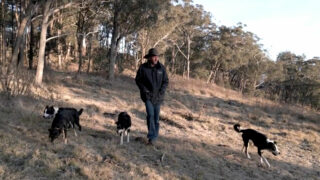Around the sector some of the most innovative social purpose organisations are led by Founders. The article below, published by Stanford Social Innovation Review from the work of Bridgespan is a great summary and well worth the read and it chimes with our experience in the Australian social purpose sector.
One notable thing about our work with Founder-led organisations is that the work never begins because they’re Founder led. It begins for other reasons, but once there is confidence, safety and trust, the fact they are founder-led inevitably leads to big conversations about succession.
These conversations tend to fall into one or more of the following categories:
- I’m the founder and I want to go on and do something else, or less of this and more of something else.
- I’m the founder and I know in my heart that I’m not doing the best job at leading anymore
- I’m on the Board or an executive of an organisation and I’m concerned about the need for succession.
- I’m a staff member and some of the behaviours of our Founder cause issues and I also am completely devoted to them and this cause.
For Boards, Founders, and Executives the emotionally charged and highly personal nature of these conversations can seem so confronting that it can be tempting to go into the very natural human behaviour of avoidance. The key with Founder succession however is to manage it really well and that requires reflecting deeply on what’s going on.
From our experience working with founders and their ground-breaking organisations through these transitions, one thing is certain – there is no one-size fits-all answer to what role the Founder should play in the future for the organisation, or the pace of the change. For every organisation there is both a profoundly different ‘right’ answer, and some common recurring themes.
What is common is that in almost all cases the Founder is holding organisational credibility, funder relationships and are very often the very heart and soul of the organisation’s reason for being. For Founders, the organisation has been their life’s work, purpose and meaning for a big chunk of their life. And for Directors and staff, it is highly likely that many of them joined the organisation just to spend time with the Founder.
So, where to start?
One of the most helpful and important conversations we find to start with is around where people’s areas of genius lies and where it doesn’t. Founders, like all other mortals, have things they are incredible at, and things that just aren’t their areas of genius. Being able to comfortably talk about this is a huge step forward and allows those leading the organisation to begin to think together about what the future could look like.
Some of the ways we help to surface this include:
- Building a coaching relationship with the Founder. Usually this starts off with informal conversations about other things, and slowly, becomes a trusted thought partnership where support and challenge can come in.
- A good leadership profiling tool, like our Lumina Spark is often extremely helpful in providing a neutral strengths-based perspective. This can help the Founder themselves, and/or others around them to gain a common language for discussing strengths, diversity, and blind spots.
- In some cases, having a chance to interview and listen to the staff is another key piece, and gives the organisation a way to begin to bring everyone on the journey, with a wider and informed view.
- A team building or team coaching project can be an excellent starting point and is certainly a very important lever for strengthening the organisation, and helping it move from a kind of focus on an individual having the centrifugal force of legitimacy, to a wider leadership collective holding this.
- And finally, the role of the Board is important. Strategic planning can be an excellent time to conduct independently facilitated Board and Stakeholder focus groups, which provides a safe way to surface themes like Founder succession as a risk.
Whether you are on the Board, the Founder, or an Executive, knowing that succession is hard but is also an opportunity for growth and transformation should give you hope and the courage to begin. As you navigate to a new place in the system for the Founder – whether that is to the Chair role, a position on the Board, a member of the Executive, as a co-lead with a new CEO, or as a paid or unpaid consultant, the critical message is to go slowly enough for everyone to process the opportunity and challenges, experiment, and recalibrate. The pay-off for the organisation is worth the investment of time: rush it or avoid it, and at best you’ll send shock waves through the organisation impacting staff, funders and the people you serve, and at worst, you’ll be seeding its’ ultimate demise. Do it well and the organisation is likely to be around for decades to come, serving those who desperately need it.
If you’d like to get in touch to learn more about how we can help, drop us a line at hello@leadershipspace.com.au
Read More: Article “Making Founder Successions Work” published in the Stanford Social Innovation Review.







